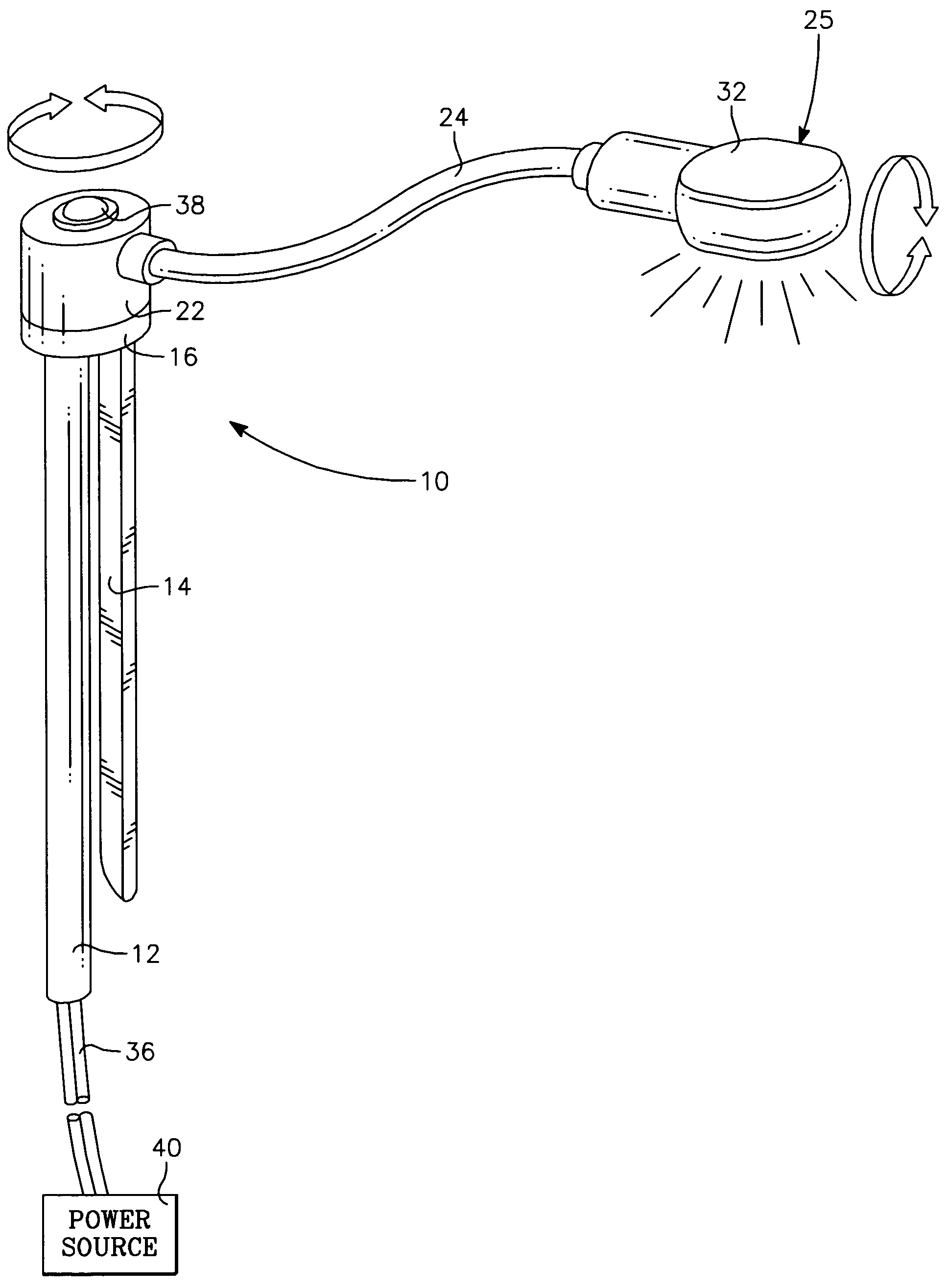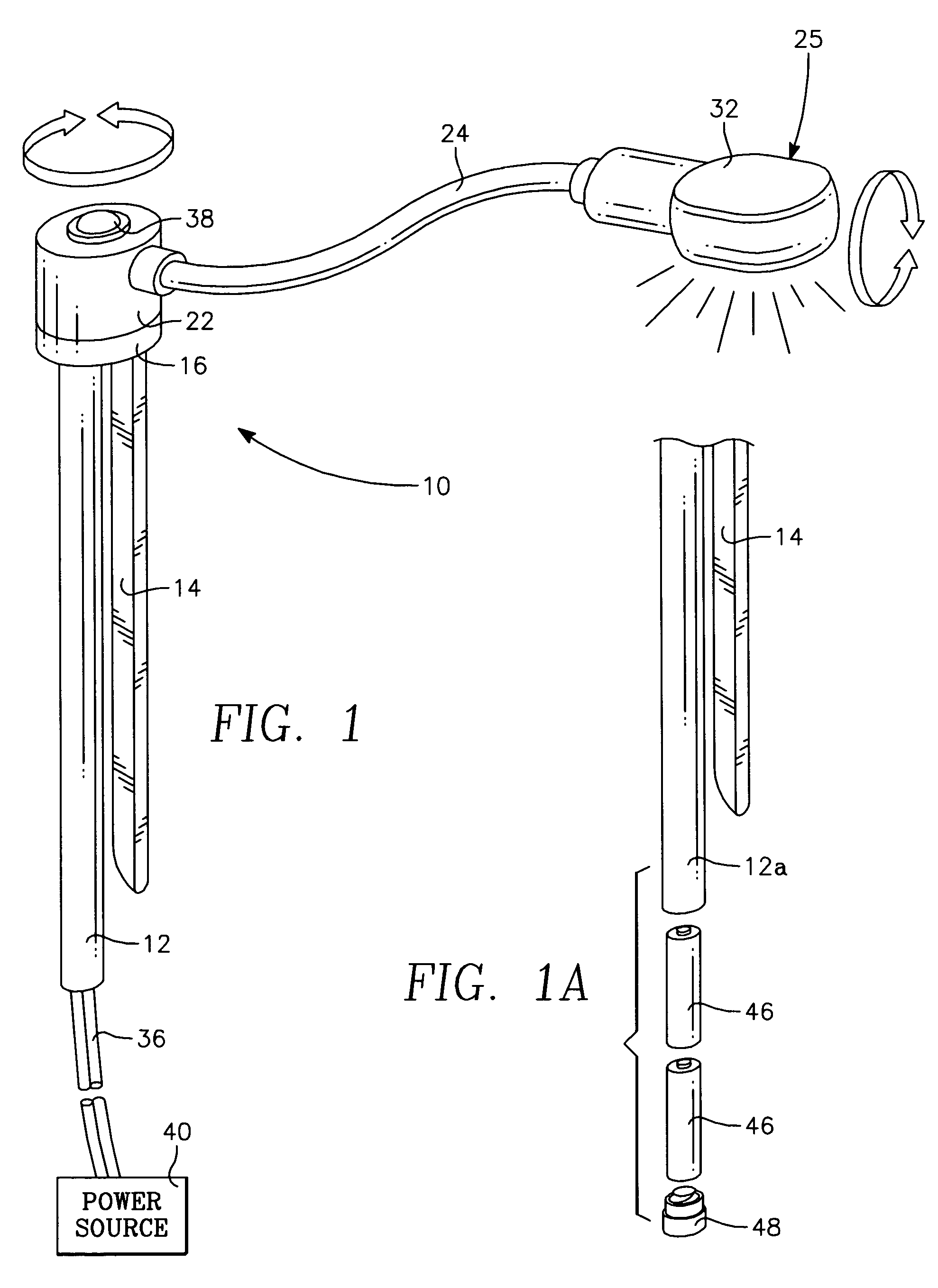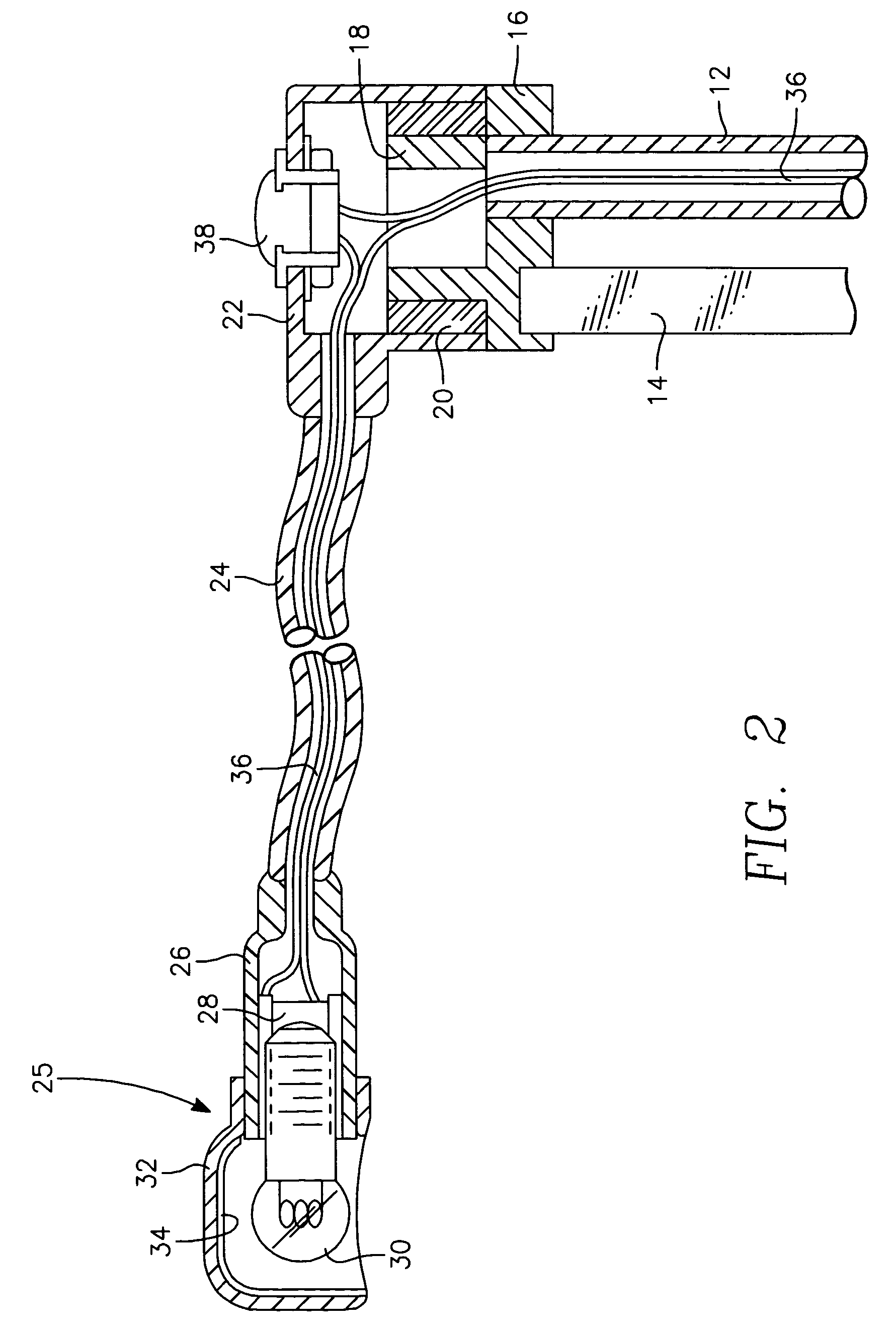Book spine mounted book light
- Summary
- Abstract
- Description
- Claims
- Application Information
AI Technical Summary
Benefits of technology
Problems solved by technology
Method used
Image
Examples
Embodiment Construction
[0050]Reference will now be made to the drawings wherein like numerals refer to like parts throughout. A preferred embodiment of the present invention is illustrated in FIG. 1. Book light 10 comprises a back gripping member 12 and a front gripping member 14 for removably mounting book light 10 to a book spine 44 (FIGS. 3 and 4), an outer rotational bearing 22 that is rotatably or pivotably mounted to inner stationary bearing 18 (FIG. 2) to provide 360 degrees rotation of flexible arm 24 about a longitudinal axis of gripping members 12 and 14. Specifically, front gripping member 14 and back gripping member 12 are removably mountable to book spine 44 at a front side and a backside of book spine 44 respectively (FIGS. 3 and 4), so that front gripping member 14 and back gripping member 12 are configured to elastically sandwich book spine 44. Book light 10 further comprises a lighting assembly, or light source, generally indicated in 25 coupled to flexible arm 24 and powered by a convent...
PUM
 Login to View More
Login to View More Abstract
Description
Claims
Application Information
 Login to View More
Login to View More - R&D
- Intellectual Property
- Life Sciences
- Materials
- Tech Scout
- Unparalleled Data Quality
- Higher Quality Content
- 60% Fewer Hallucinations
Browse by: Latest US Patents, China's latest patents, Technical Efficacy Thesaurus, Application Domain, Technology Topic, Popular Technical Reports.
© 2025 PatSnap. All rights reserved.Legal|Privacy policy|Modern Slavery Act Transparency Statement|Sitemap|About US| Contact US: help@patsnap.com



